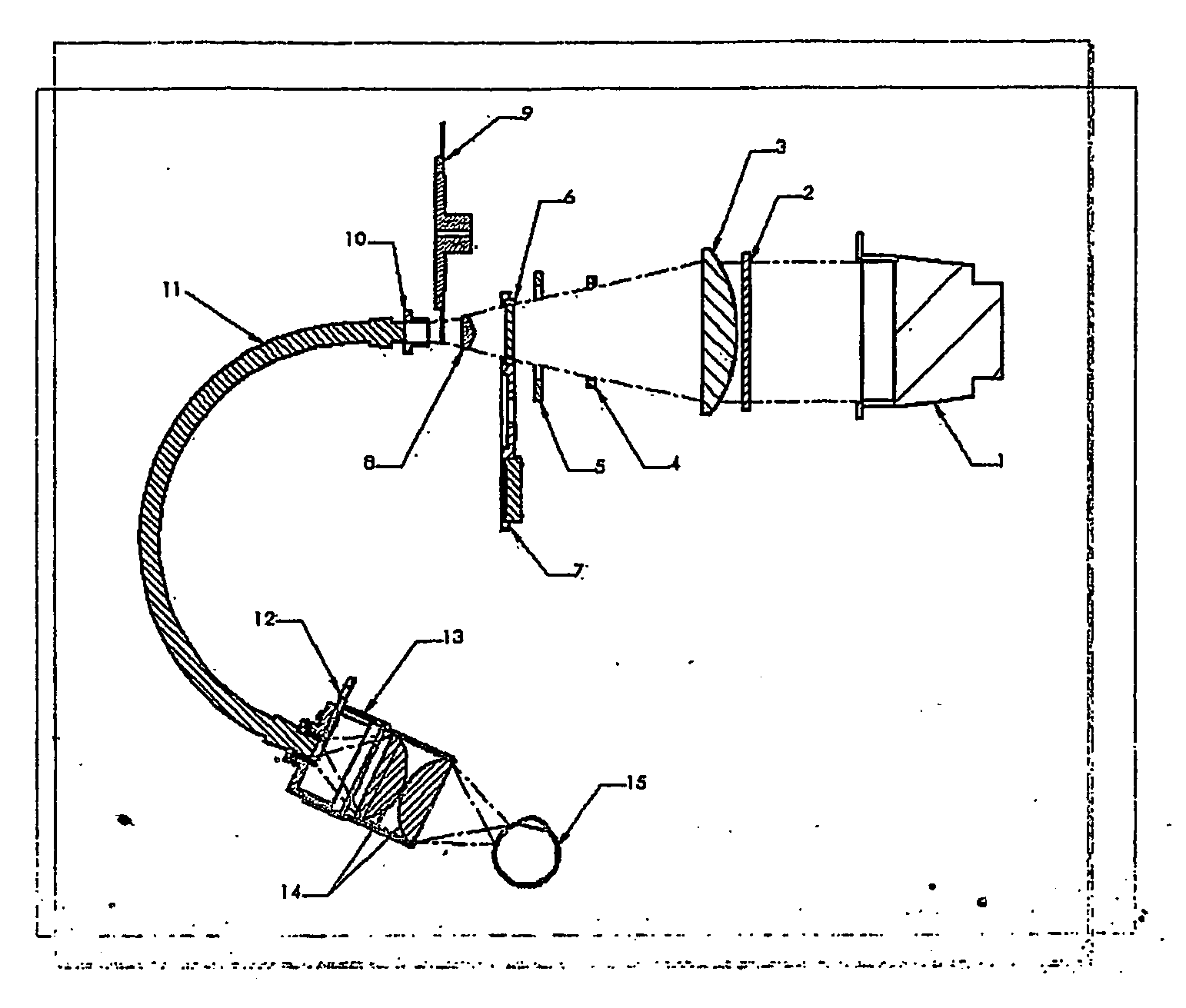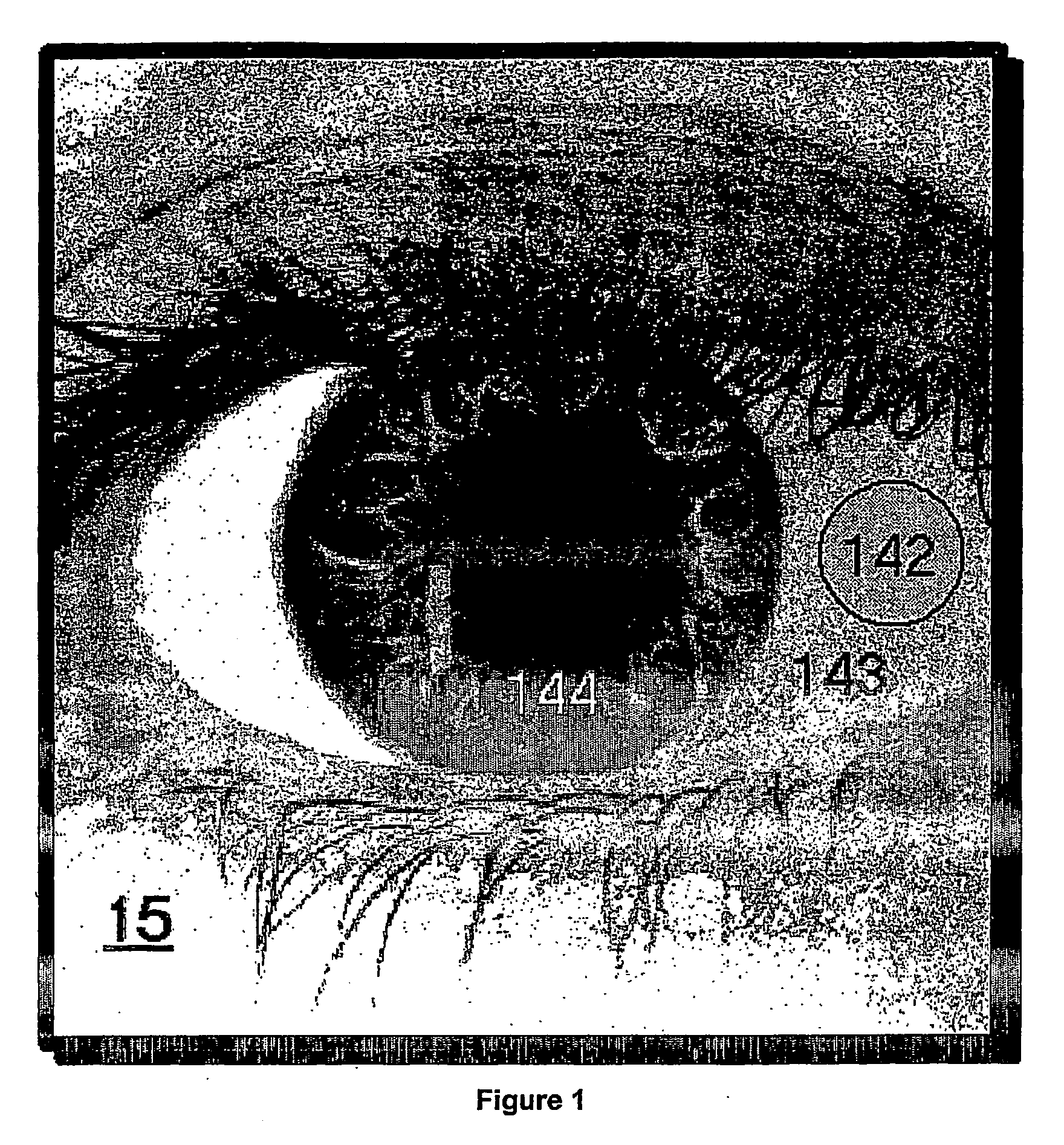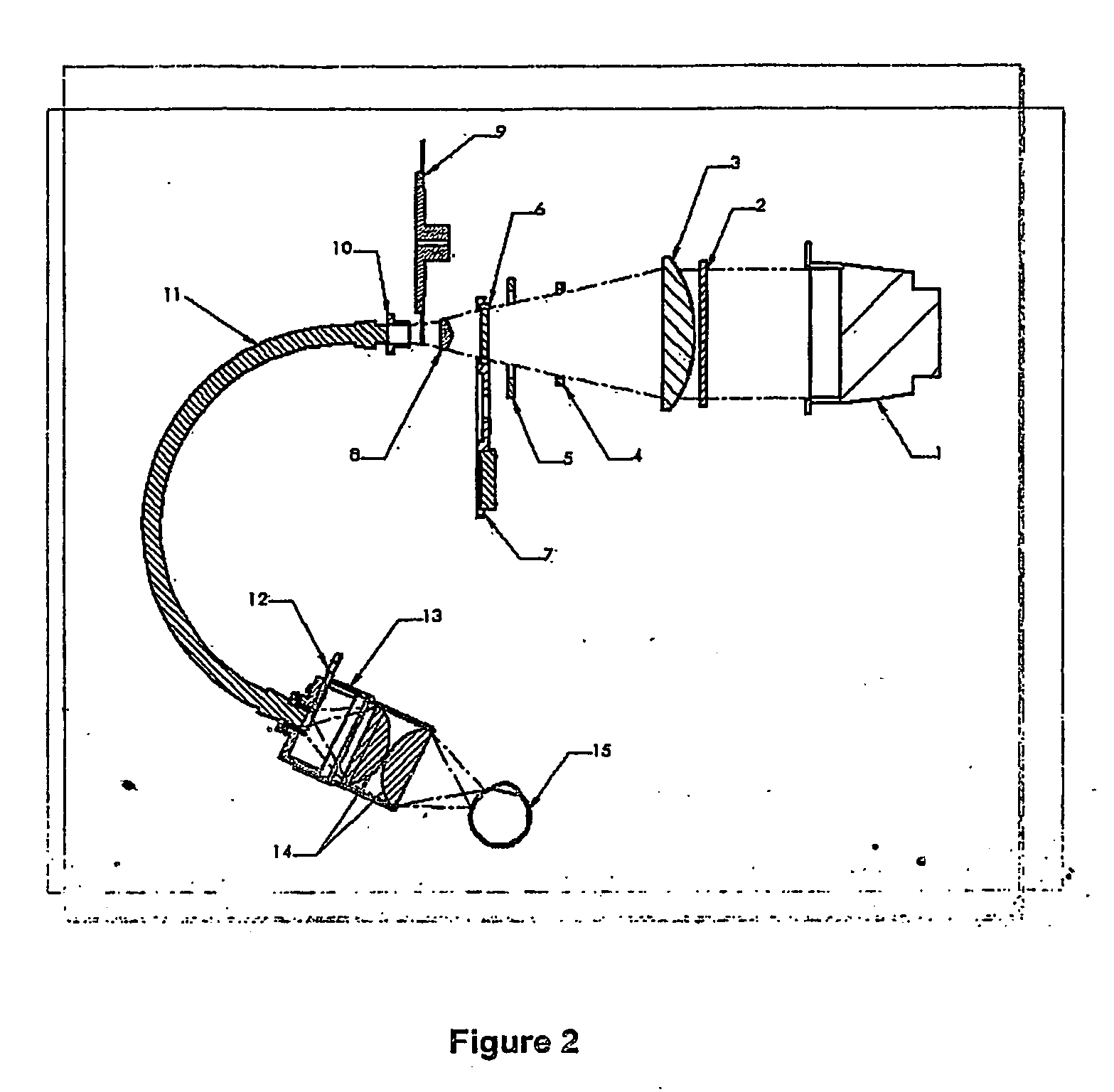Transcleral opthalmic illumination method and system
- Summary
- Abstract
- Description
- Claims
- Application Information
AI Technical Summary
Benefits of technology
Problems solved by technology
Method used
Image
Examples
example 1
Illumination Focusing Element Attached to a Chin Rest
[0053]FIG. 5 shows an example of the present invention in conjunction with the imaging optics of a standard fundus camera (by way of example Topcon's TRC-50X) that operates at a distance of approximately 5 cm from the eye cornea. In the camera of FIG. 5, the elements that focus the light on the eye sclera are coupled to a chin rest system that fixes the patient's face and eye position relative to the projected light and with the possibility of directing the orientation of the eye. Optical fiber 11 (see also FIG. 2) conveys the light from the light source to condenser 13, which is supported by the adjustable arm 16 that gives a full freedom to focus the light spot to the right position on the patient's eye sclera as in FIG. 1. Focusing of the spot takes place while the patient's head is resting on the chin rest 17. When illuminating the sclera with condenser 13 (see FIG. 2), the optics of the TRC-50X (by way of example) conveys th...
example 2
Illumination and Focusing Elements Encased in a Device that Positions the Patient's Eye Appropriately for Transcleral Illumination
[0056] Further, in yet another embodiment of the invention, optical fiber 11 can be split into two, leading to optics 131 that illuminate the sclera simultaneously both on the nasal and on the temporal sides of the eye. FIGS. 8(a) and 8(b), illustrate a device that encases optics 141 to focus the light illumination spots 142 that originate from optical fiber ends 151 on the sclera of eye 15. Device 131 is coupled to a chin rest, and the two optical fiber ends stem from a single optical fiber (e.g., optical fiber 11 in FIG. 2) that is split into two (see e.g., FIG. 9) by a well-known technology. Head positioning on the chin rest is done in a way that the patient approaches it with the eye first, to touch ring 161 externally to the eyelids, and only afterwards adjusts the chin rest to support the head for the acquisition. The observation and imaging system...
example 3
Illumination Focusing Element Attached to the Same Moving Platform as the Optical Imaging System Apart from Rotation
[0060]FIGS. 10 and 11 show a third example of the present invention. In FIG. 10, the present invention is implemented in conjunction with the imaging optics of a standard fundus camera that operates at a distance of approximately 5 cm from the eye cornea. In the system of FIG. 10, the elements that focus the light onto the eye sclera are coupled to the optical system that is used to observe the interior of the eye in a way that whenever the optics is properly positioned to observe the interior of the eye, the illumination light spot is properly focused at the right position on the eye sclera. In FIG. 11, the present invention is implemented with an imaging optics that was especially designed to exploit the advantages of non-contact transcleral illumination. As in the system of FIG. 10, in FIG. 11, the elements that focus the light onto the eye sclera are coupled to th...
PUM
 Login to View More
Login to View More Abstract
Description
Claims
Application Information
 Login to View More
Login to View More - R&D
- Intellectual Property
- Life Sciences
- Materials
- Tech Scout
- Unparalleled Data Quality
- Higher Quality Content
- 60% Fewer Hallucinations
Browse by: Latest US Patents, China's latest patents, Technical Efficacy Thesaurus, Application Domain, Technology Topic, Popular Technical Reports.
© 2025 PatSnap. All rights reserved.Legal|Privacy policy|Modern Slavery Act Transparency Statement|Sitemap|About US| Contact US: help@patsnap.com



